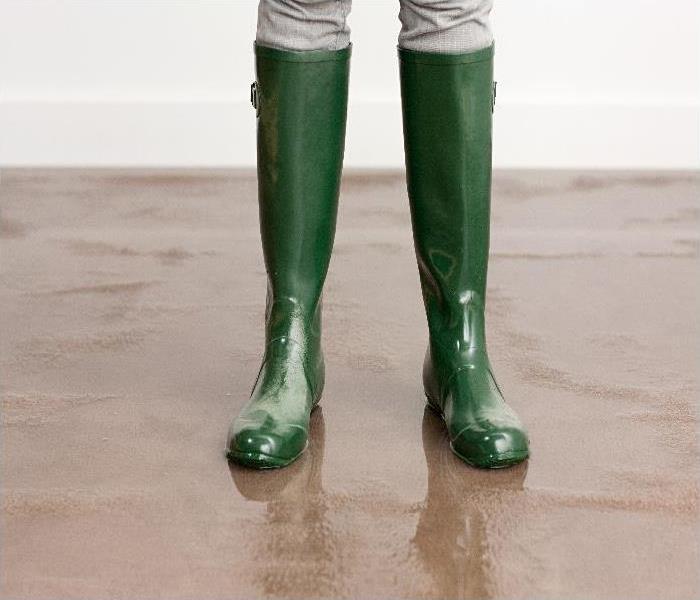Should I Worry About Safety After Flood Damage at My Yorktown Heights Property?
6/19/2020 (Permalink)
 SERVPRO of Northern Westchester County has the expertise to identify and resolve potential hazards from flooding.
SERVPRO of Northern Westchester County has the expertise to identify and resolve potential hazards from flooding.
SERVPRO Can Help Assess Whether There Are Safety Issues in Your Yorktown Heights House after a Flooding Incident
Flooding incidents are associated with several hazards, including exposing people to dangerous substances. Flooding after a storm introduces physical risks because of the high winds and other factors that can interfere with structural components of your home. SERVPRO technicians can help assess and restore your Yorktown Heights home eliminating all hazards.
What sort of assessments is necessary after flood damage in a Yorktown Heights home?
Each flooding incident in Yorktown Heights is unique, so the assessment needs might vary, based on the extent of the damages left. Some common assessments that our SERVPRO technicians can help you perform at your loss site include:
• The level of sanitization necessary
• Checking for signs of compromised structural integrity
• Checking whether utility lines are damaged
• Assessing the possibility of mold development
Although flooding is known to contaminate properties, the level of such contamination depends on the source of water. Storms can open up roof materials, shatter windows, or create other openings that let in rainwater. The good news is that unlike groundwater intrusion, rainwater is not contaminated. Therefore, when assessing the threat posed by contamination, we consider how the water breached the property.
Apart from the contaminants swept into the property from outside, some harmful substances, already existing in the house can be exposed during restoration processes such as demolition of walls or floors to reach wet materials. Our technicians assess all areas that need demolition to determine whether there is the presence of asbestos or other harmful substances.
In case we find hazardous materials, we can help remove them, guaranteeing your safety. For instance, if we find asbestos-containing materials, we take various precautions, including wetting them before attempting any removal steps. We can also involve ACM specialists for a thorough removal.
What signs indicate underlying structural issues?
Storms can compromise the structural integrity of your house even if they do not bring it down completely. However, not all incidents lead to structural damage, which adds to the confusion of whether a building is safe. Luckily, structural issues present a wide range of signs, such as:
• Cracks appearing in walls, floors and other parts of the building
• Gaps around door and window frames
• Front porch appearing to pull away from the house
Most structural problems continue to worsen over time if not rectified. Of all the signs, cracks are the most readily visible indicator that there is a problem. They are also likely to precede any other sign. Mostly cracks appear because of problems with the foundation whereby the building settles on one side more than the other.
Apart from foundation issues, the storms can affect the frames, trusses, and other structural supports leaving weak or misaligned joints. Our SERVPRO technicians look for signs such as crooked roof valleys or uneven floors, especially on upper room floors. In case we notice a problem, we can help you find a qualified building contractor to help rectify it before it causes problems.
Should I worry about mold infestation after flooding?
Mold can develop unnoticed in hidden sections of the house, such as wall cavities. Since mold is associated with health issues, you might be afraid of such development in your house after flooding. The main factor that drives mold infestations is the presence of moisture, so our SERVPRO technicians take steps to identify all areas that moisture might remain hidden after completing the restoration. For instance, we can use a thermal camera to inspect floors, walls, and ceilings to establish whether there are pockets of moisture. We also use thermohygrometers to take moisture and temperature readings in different rooms within the house and even outside. Depending on the readings, we establish whether further drying procedures are necessary.
Should I plug in electronic appliances?
During flooding, water can find a way into sockets, switches, and other electrical components in your house. Since water conducts electricity, plugging in your devices can damage them because of short-circuits. Floodwater can also cause cables to rust and thus fail.
Our SERVPRO team opens up sockets, switches, junction boxes, and ceiling roses to release trapped water. We also involve professional electricians to inspect the systems thoroughly, establishing whether repairs or replacements are necessary, thus allowing you to operate your electrical appliances safely.
Apart from electrical cables, water can also find a way into air ducts, causing a range of problems, including mold development, which can compromise the air quality in your house. We inspect ducts, remove the water, and dry them to prevent problems. In many cases, the water removal requires some demolition of the areas around the ducts or drilling small holes in the ducts to drain water. We handle these aspects of the removal conveniently.
SERVPRO of Northern Westchester County has the expertise to identify and resolve potential hazards from flooding. Call us at (914) 241-8100 to assist you. We’re Faster to Any Size Disaster.






 24/7 Emergency Service
24/7 Emergency Service